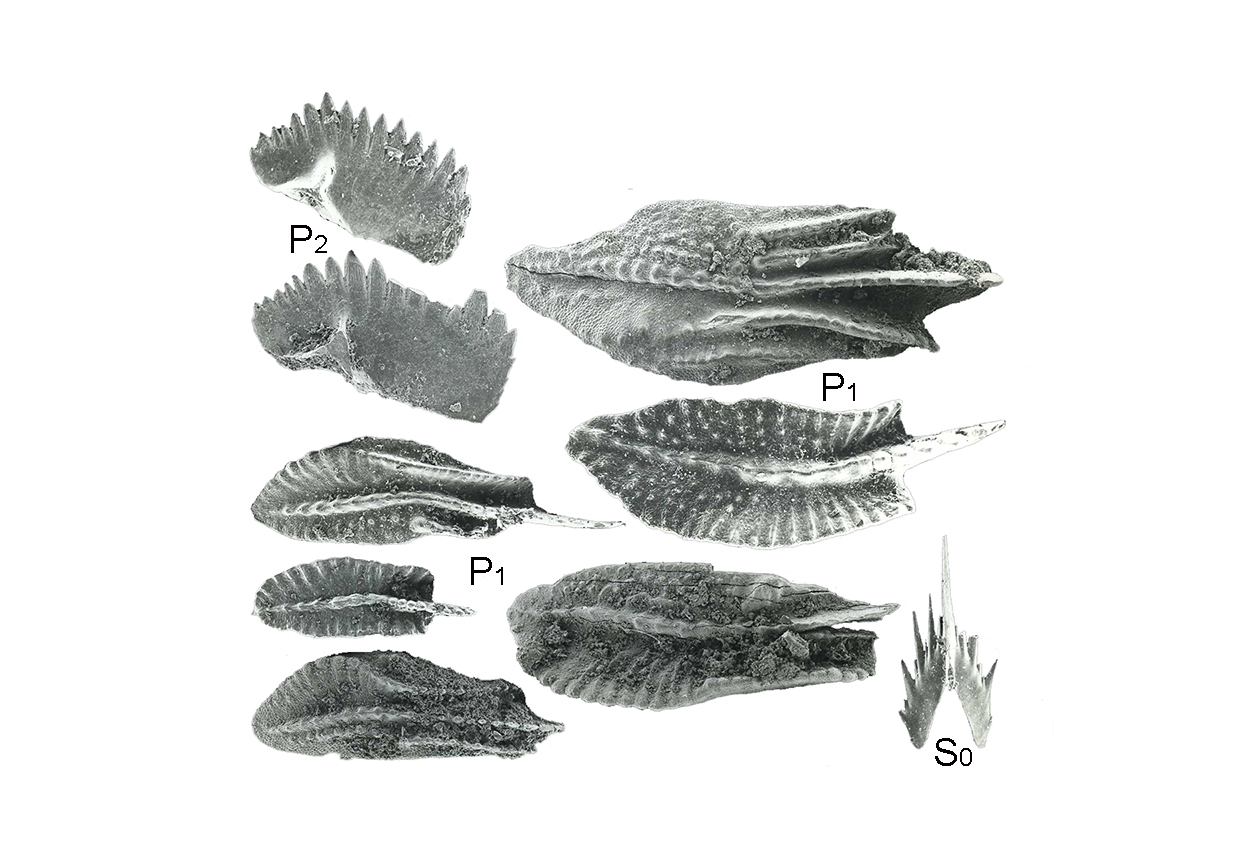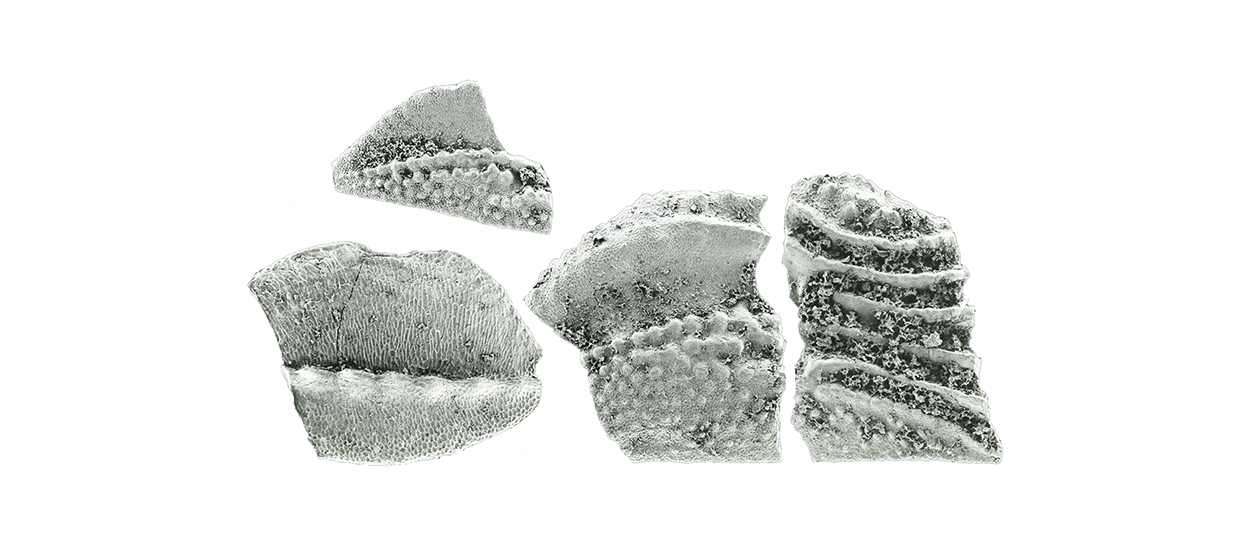Siphonodella sp. cf. S. obsoleta Hass, 1959
Sugerowana cytacja: Moczyński 2016. Siphonodella sp. cf. S. obsoleta Hass 1959. Ikonoteka (http://ikonoteka.paleo.pan.pl/xwiki/bin/view/Species/Siphonodella+obsoleta)
Diagnoza
Porównanie The posterior rostral ridges of the P1 elements continue much above the level of the cusp (basal pit), almost half of them being sinusoidally curved and reaching the posterior margin asymptotically. Unlike the older populations, the concave central part of the platform is ornamented by at least weakly developed transverse ridges or, rarely, by tubercles . The P2 elements are of morphology similar to those of earlier species of Siphonodella except for much stronger transverse ridges at the basal cavity, giving the element a cruciform appearance when seen occlusally. The S elements do not differ significantly from those of other species of the genus. Autekologia Występowanie geograficzne Zasięg czasowy Tournaisian Materiały muzealne ZPAL Literatura Dzik, J. 1997. Emergence and succession of Carboniferous conodont and ammonoid communities in the Polish part of the Variscan sea. Acta Palaeontologica Polonica 42, 57-170. |
|



